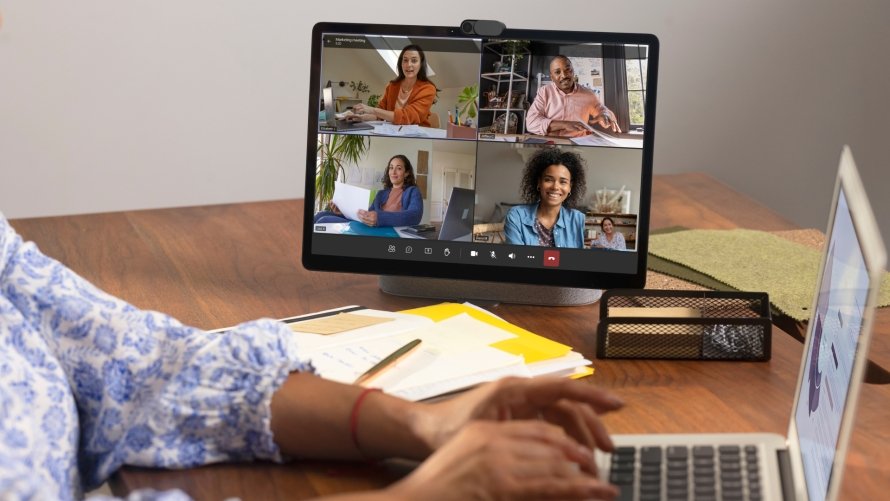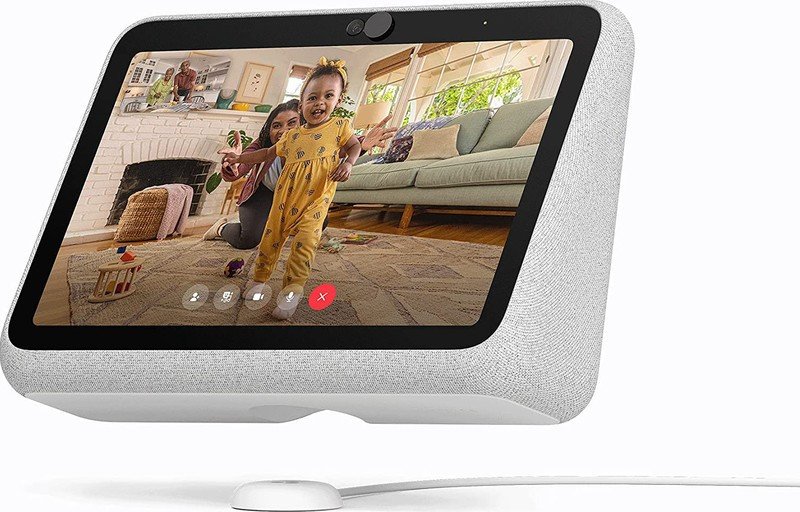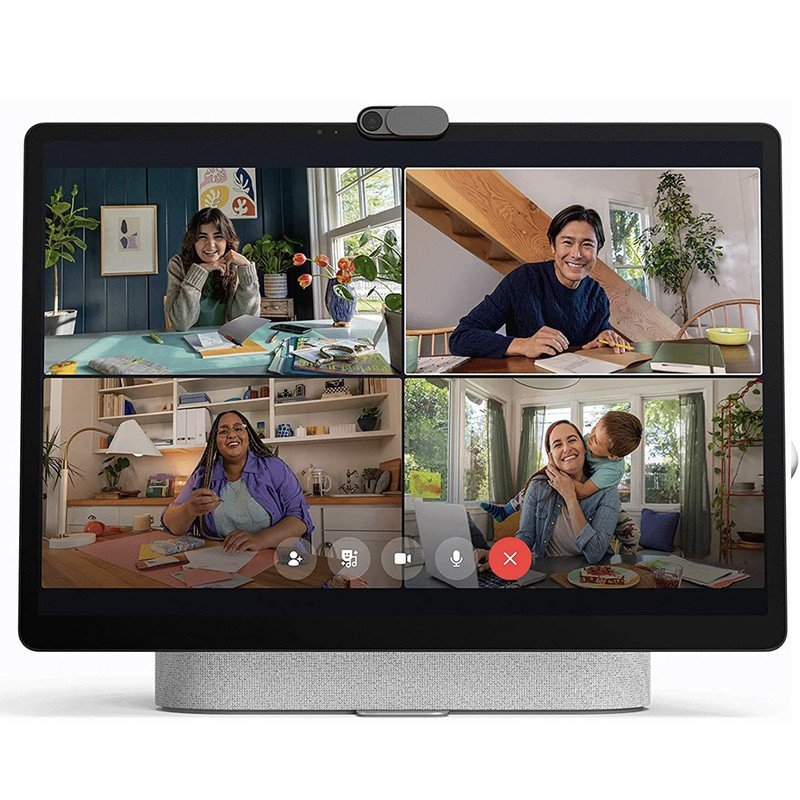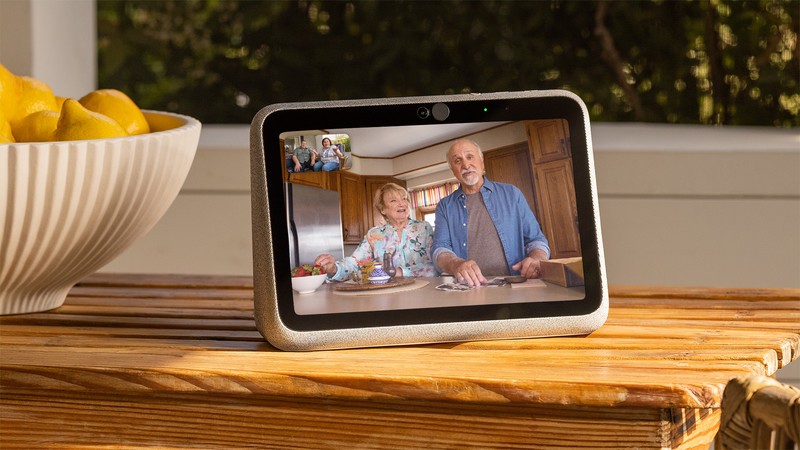Facebook Portal Go vs. Portal+

Portal Go

The Portal Go's gimmick is its wireless charging dock, but it can also be moved around the house, making it a mobile smart display/music speaker for any situation. The display is small compared to the Plus, but it does give you more space than a typical Echo Show.
Portal Go
Use it in every room
Portal+

The Portal+ is a plus-sized display that'll make it much easier to get a good look at whoever you're Zooming with. It can be tilted up and down, and the camera will zoom and track you around the room — though the display itself doesn't move.
Portal+
Auto-tracking display
The Facebook Portal Go and Portal+ are Facebook's two newest smart displays, with similar internals and apps but very different designs and use cases. One is a wireless display you can carry around to different rooms based on your needs; its display is decently sized but better viewed up close. The other runs off wired power and sits in one place, but gives you much more screen space and a better resolution, plus a camera that zooms and tracks you around a room, making it more visible from afar. The Portal Go is arguably the better choice for most people, but there are arguments for upgrading to the Plus — or buying neither.
Facebook Portal Go vs. Portal+: Similar offerings, different form factors
Released at the same time, the Portal Go and Portal+ may not look like one another on the surface, but bring much of the same perks (and flaws) to the table. While the Plus gives you a better display, both devices have similar camera quality, mics, speakers, connectivity standards, and apps.
| Header Cell - Column 0 | Facebook Portal Go | Facebook Portal+ |
|---|---|---|
| Display | 10.1-inch, 800x1280, adaptive brightness | 14-inch, 1440x2160, adaptive brightness |
| Camera | 12MP, 125-degree FOV | 12MP, 131-degree FOV |
| Mics | 4-mic array | 4-mic array |
| Speakers | Two 5W full-range speakers, one 20W woofer | Two 5W full-range speakers, one 20W woofer |
| Power | Cordless charging dock | Power cord only |
| Battery life | 44 idle hours, up to 5 hours video calling, up to 14 hours audio playback | 🚫 (wired only) |
| Auto-tracking camera | ✔️ | 🚫 |
| Privacy | Mic and camera disable button, integrated camera cover | Mic and camera disable button, integrated camera cover |
| Connectivity | 2.4GHz, 5GHz, Bluetooth 5.1 | 2.4GHz, 5GHz, Bluetooth 5.1 |
| Smart assistants | Built-in Alexa | Built-in Alexa |
| Dimensions | 6.84 x 10.1 x 3.1 inches | 9.87 x 12.31 x 3.86 inches |
Both Portals are designed primarily for video calls with friends, family, or coworkers. And in that area, both give very similar experiences. Similar cameras with the same megapixels and nearly the same field of view (FOV), plus the same four-mic array, means others will experience your feed the same way. And both have the same two speakers and woofer, so they'll sound equally clear and loud with either device.
Aside from the display, the Portal+ doesn't offer much of a spec upgrade on the portable Go.
Thanks to built-in Alexa support, your Portal Go or Plus can answer your questions, control your smart home, or do pretty much whatever else an Echo device can do. Also, thanks to Bluetooth support, you can connect your wireless headphones if you need to take a video call without annoying a roommate or loved one.
The Portal Plus's main perk is its camera zooms in on you from afar, so people can see you if you move around a room. Unfortunately, the display itself doesn't actually pan and tilt automatically like the Echo Show 10, but you can tilt it up or down manually to get the best angle.
Be an expert in 5 minutes
Get the latest news from Android Central, your trusted companion in the world of Android
As for the Portal Go, you can physically move it to another part of the room, so you're always close to the camera. Also, five hours of video calling or 14 hours of music streaming should be plenty before you have to anchor it back on its charging dock.
Of the two, the Portal Go has much more versatility, while the Portal+ works better if you have a dedicated office, living room, or kitchen space where you always plan to make calls.
The Portal Plus trounces other smart displays with its 14-inch QHD display, while the Portal Go matches more expensive rivals.
The Plus-sized version is much larger and taller than the Go; it's essentially the size of a laptop screen, with QHD resolution that'll make your family members' faces look much more real. But to be fair to the Go, its 10.1-inch display matches the Echo Show 10 for size and resolution, so it's actually larger than most smart displays except for the high-end ones.
Because of Facebook's iffy privacy track record, you'll be happy to know that both devices have a physical camera shutter and mic-disabling buttons. Neither has facial recognition like the Nest Hub Max, which you'll either see as a relief or a downside.
Facebook Portal Go vs. Portal+: Supported apps and features

To set up your Portal Go or Portal+, you'll need a Facebook or Whatsapp account. No deleting your Facebook account and keeping your Portal. Then, to get the most out of the built-in Alexa tools, you'll also need an Amazon account. And you'll need to log into whichever video calling app you plan to use, assuming it isn't Messenger.
Both devices have the same app selection:
- Alexa Built-in
- BlueJeans
- CBS News
- Deezer
- Facebook Live
- Facebook Watch
- GoTo
- iHeart Radio
- Messenger
- Microsoft Teams
- Newsy
- Pandora
- Plex
- RedBull TV
- Sidechef
- Spotify
- Tidal
- Webex
- Workplace by Facebook
- Zoom
Facebook deserves credit for bringing in a wide range of video calling apps here, given that's what most people will use it for; it recently added Teams and could theoretically add more. But outside of niche apps like RedBull TV, you won't find popular video streaming apps like YouTube, Netflix, Prime Video, or others here.
On a 14-inch QHD screen like the Portal+, that's a considerable loss; on the Go, it's more an unfortunate lapse, given its HD resolution. For video streaming and calling with more app selection, you might want to invest in an Android tablet, and a cover stand instead.
Also, if you use Amazon, Apple, or YouTube Music, they're not supported and likely won't be anytime soon. But with a Spotify, Deezer, or Tidus subscription, you can happily listen to your favorite playlists, either through the speakers or your Bluetooth headphones. Of course, neither Portal will sound as good as a dedicated Bluetooth speaker or soundbar.
Otherwise, both Portals have the same video calling features like AR effects and Story Time and the same software. The Plus is better optimized for apps like Zoom because it can fit more people on screen at once without making them too small to see, but you'll have to decide if that's worth the extra $150.
Facebook Portal Go vs. Portal+: Which should you buy?

Until Jan. 2, both devices are $50 off, after which the Portal Go and Portal+ will cost $200 and $350, respectively. Compared to the best smart displays, only the Portal Go price is somewhat reasonable, while the Portal+ has a premium price.
The Portal Go's versatility and affordable price will matter more than video quality for many buyers.
If you're going to use your Portal for daily work-from-home meetings or frequent family check-ins, this might justify the Plus's high cost. But it's more likely that the compact Portal Go would fit on a desk for those daily calls. And QHD quality may not matter much if the people you're calling have 720p or 1080p webcams.
If you're going to buy a Portal, we'd suggest going with the Portal Go since the Plus doesn't offer enough upgrades to justify the higher cost. Just make sure that either display offers the apps that you want or need; otherwise, another smart display or tablet might serve as a better fit.

Use it in every room
With multiple video apps, loudspeakers, hours of battery life, Alexa support, and other perks, the Portal Go is a solid, smart display with a unique gimmick: you can remove it from its charger and take it anywhere in the house.

A camera that follows you
The Portal+ may not physically move around the Echo Show 10, but its 12MP camera can zoom and track you if you want to stay mobile while video calling with family or coworkers. Its giant-sized display will let you see their faces much more clearly.

Michael is Android Central's resident expert on wearables and fitness. Before joining Android Central, he freelanced for years at Techradar, Wareable, Windows Central, and Digital Trends. Channeling his love of running, he established himself as an expert on fitness watches, testing and reviewing models from Garmin, Fitbit, Samsung, Apple, COROS, Polar, Amazfit, Suunto, and more.
